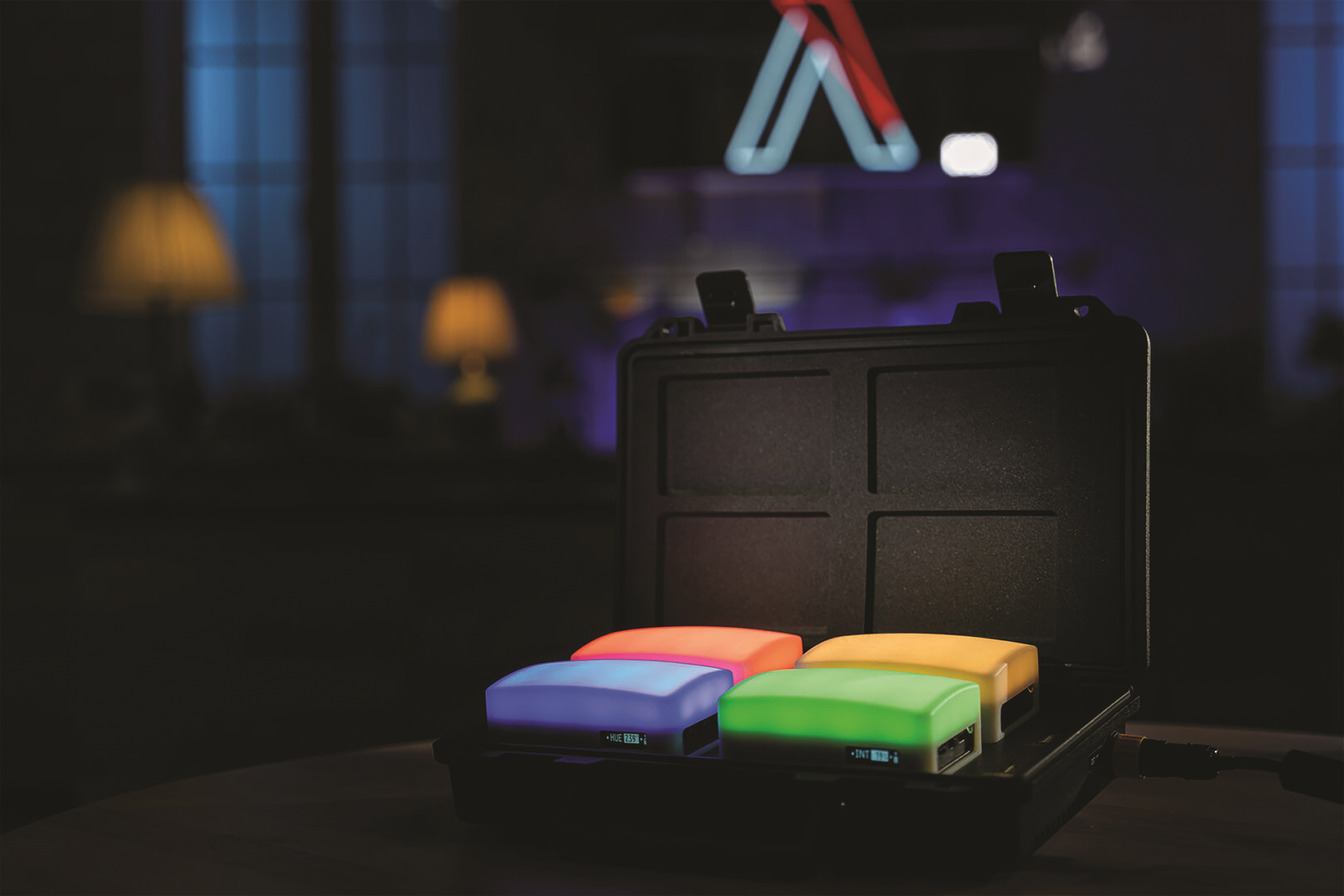Making Use of Small Lights for Specificity
Advances in technology offer new options and expanded usage

There are so many reasons why the use of larger lighting sources is preferred a lot of the time on set. The ability to cut, soften and shape a larger source tends to be much easier than a smaller one. Output is not lost as quickly as from a smaller source and these bigger lights can be used to cover a large surface area and create ambience. I have written on the versatility of smaller sources before, but technology is advancing so quickly that new options have since become available and the ways to use them have expanded.
COMPLETELY WIRELESS
Popular small lights that have held up include ARRI’s smaller fresnels and the Dedolight. Small tungsten units such as these for uplights or as extensions of practicals that already exist in the frame are so useful. ARRI has a variety of lower wattages to choose from, which adds versatility in being able to shape and soften them more. A newer unit of similar size is the Astera AX5 and, like Dedolight’s, great for things in the frame other than talent. I find the most useful function they serve is adding a splash of highlight in the frame.
For example, on a recent commercial, we were in a barn and had barrels and other foreground elements that were falling into shadow. So adding a little shape to them with an AX5 was a great way to make them more interesting in the frame. Now we have the ability with a smaller unit like the AX5 to be completely wireless. Not only are they battery-powered, but they’re completely controllable wirelessly in terms of color, intensity, etc. This ultimately saves time within a setup.
Other small units are panels such as Aputure’s MC-4, which can act as a replacement for a bulb in some instances. In a different commercial, this light served as a great interior refrigerator light where I needed a light gag of changing frequency. Like the AX5, the battery-powered MC-4 can be controlled via an app. We had a refrigerator out in the middle of a crop circle and needed a flicker effect inside during the morning. Not only were we able to set the flicker frequency, color and intensity over the app, it was also bright enough to read on camera during ambient daylight.
The app even had a flicker-effect preset so we could immediately choose that effect and then alter the characteristics of it to our liking. Aputure has many panels like this that are magnetic too. You are saving time not having to run power or going to the unit to change a setting, and now rigging can be made simpler, too, depending on the surface.
‘SMALL UNITS’ FOR LIGHTING HUMANS
When lighting human subjects in the frame, lights such as those mentioned earlier would not come into play for me. But there are still “small” units that I would lean toward. Again, using a large source is great but it becomes a bit of a “grip jungle”—so many stands and flags and diffusion have to surround a large source in order to focus it on a subject. Sometimes it is appropriate to downsize your key, and in my experience it’s usually when you don’t have much space.
If you have your subject close to walls or other elements in space that light would spill onto, key with something smaller. As much as you may want to bring the subject out from walls, you might not win the argument to do so. Something like a Litemat 2L or Leko is great when you want a focused key. Quality is something to take into consideration—the moment you soften, you spread the light everywhere.
A popular lighting approach right now is one that is minimal. Smaller units play into more specificity. When we think minimal, it’s just a couple large sources doing all the work for a space. The use of smaller lights lends itself to adding interest in the frame and creating separation.
It can also help heighten the design that is in front of the camera. Practicals are just one way to achieve this, but adding highlights with other film lights just outside the frame can add even more dimensionality to the image. Small cinema lights are becoming more versatile than ever before, with battery life becoming longer and longer and the abilities on the apps becoming increasingly more adaptable and fast.
Julia Swain is a cinematographer whose work includes films such as “Lucky” and “Speed of Life” alongside dozens of commercials and music videos. She continues to shoot on a variety of formats, seeking to create compelling visuals for every story and brand. She can be reached through TV Tech.
Get the TV Tech Newsletter
The professional video industry's #1 source for news, trends and product and tech information. Sign up below.
